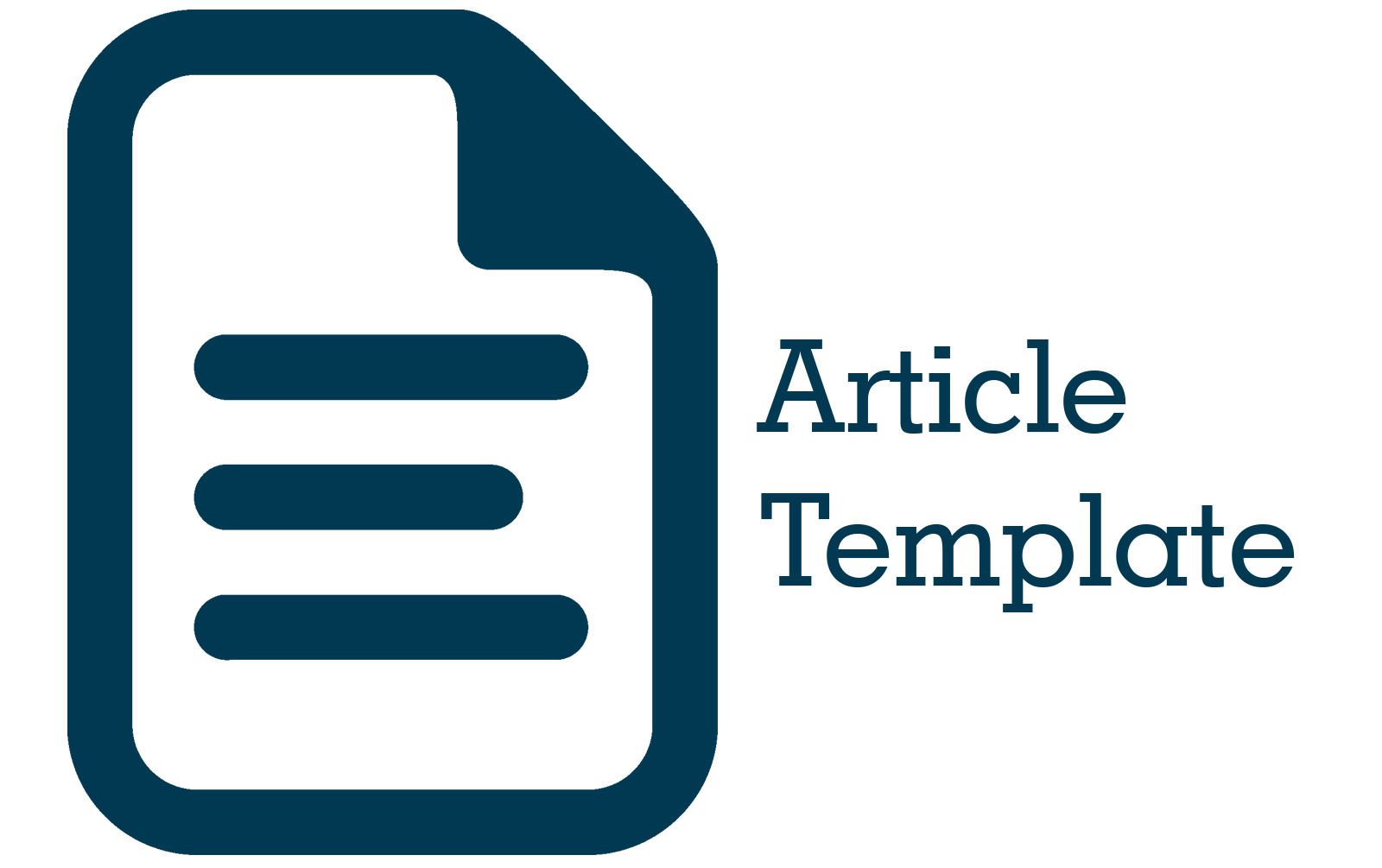Studi Literatur Nanostructured Lipid Carriers (NLC) untuk Pengobatan Jerawat
Abstract
Abstract. Acne is a chronic inflammatory disorder of the pilosebaceous unit. The first-line treatment for acne is topical medications made from synthetic compounds. However, synthetic compounds usually cause skin irritation, dryness and itching. To overcome these limitations, it can be done by encapsulating in lipid-based nano-delivery systems such as Nanostructured Lipid Carriers (NLC). This study aims to assess the formulation and characteristics of NLC containing anti-acne compounds. The method used was Systematic Literature Review (SLR) with articles taken from various reputable databases. The results of the literature review showed that NLC formulations containing anti-acne compounds were made with a combination of solid lipids, liquid lipids, and non-ionic surfactants. Characterization showed that the particle size of the NLCs was in the range of 158.4 to 762 nm, the polydispersity index (PDI) was less than 0.5, the zeta potential was in the range of -28.3 to -53.1 mV, and the sorption efficiency was in the range of 91.16% to 98.58%. Based on these results, NLCs containing anti-acne compounds show good physical stability and have the potential to increase the effectiveness of anti-acne compounds for topical application.
Abstrak. Jerawat merupakan kelainan peradangan kronis pada unit pilosebaseus. Pengobatan lini pertama untuk jerawat adalah obat topikal yang terbuat dari senyawa sintetis. Namun senyawa sintesis biasanya menyebabkan iritasi kulit, kekeringan dan gatal. Untuk mengatasi keterbatasan ini, dapat dilakukan dengan mengenkapsulasi dalam sistem penghantaran nano berbasis lipid seperti Nanostructured Lipid Carriers (NLC). Penelitian ini bertujuan untuk mengkaji formulasi dan karakteristik NLC yang mengandung senyawa antijerawat. Metode yang digunakan yaitu Systematic Literature Review (SLR) dengan artikel yang diambil dari berbagai basis data bereputasi. Hasil kajian literatur menunjukkan bahwa formulasi NLC yang mengandung senyawa antijerawat dibuat dengan kombinasi lipid padat, lipid cair, dan surfaktan non-ionik. Karakterisasi menunjukkan ukuran partikel NLC berada dalam rentang 158,4 hingga 762 nm, indeks polidispersitas (PDI) kurang dari 0,5, zeta potensial dalam rentang -28,3 hingga -53,1 mV, dan efisiensi penjerapan dalam rentang 91,16% hingga 98,58%. Berdasarkan hasil tersebut, NLC yang mengandung senyawa antijerawat menunjukkan stabilitas fisik yang baik dan berpotensi meningkatkan efektivitas senyawa antijerawat untuk aplikasi topikal.
References
Annisa, R., Hendradi, E., & Melani, D. (2016). Pengembangan Sistem Nanostructured Lipid Carriers (NLC) Meloxicam dengan Lipid Monostearin dan Miglyol 808 Menggunakan Metode Emulsifikasi. Journal of Tropical Pharmacy and Chemistry, 3(3), 156–169. https://doi.org/10.25026/jtpc.v3i3.102
Chutoprapat, R., & Kopongpanich, P. (2022). A Mini-Review on Solid Lipid Nanoparticles and Nanostructured Lipid Carriers : Topical Delivery of Phytochemicals for the Treatment of Acne Vulgaris.
Ganesan, P., & Narayanasamy, D. (2017). Lipid nanoparticles: Different preparation techniques, characterization, hurdles, and strategies for the production of solid lipid nanoparticles and nanostructured lipid carriers for oral drug delivery. Sustainable Chemistry and Pharmacy, 6(July), 37–56. https://doi.org/10.1016/j.scp.2017.07.002
Ghate, V. M., Lewis, S. A., Prabhu, P., Dubey, A., & Patel, N. (2016). Nanostructured lipid carriers for the topical delivery of tretinoin. European Journal of Pharmaceutics and Biopharmaceutics, 108, 253–261. https://doi.org/10.1016/j.ejpb.2016.07.026
Haider, M., Abdin, S. M., Kamal, L., & Orive, G. (2020). Nanostructured lipid carriers for delivery of chemotherapeutics: A review. Pharmaceutics, 12(3). https://doi.org/10.3390/pharmaceutics12030288
Hapsari, R. B., Pranoto, Y., Murdiati, A., & Supriyanto, S. (2022). Optimasi Proses Nanopresipitasi pada Nanoenkapsulasi Ekstrak Kasar Daun Kakao ( Theobroma cacao L .) Menggunakan Response Surface Methodology ( RSM ) Optimization of Nanoprecipitation Process in Nanoencapsulation of Cocoa Leaves Crude Extract ( Theobroma. AgriTECH, 42(1), 75–85.
Houacine, C., Adams, D., & Singh, K. K. (2020). Impact of liquid lipid on development and stability of trimyristin nanostructured lipid carriers for oral delivery of resveratrol. Journal of Molecular Liquids, 316, 113734. https://doi.org/10.1016/j.molliq.2020.113734
Jafar, G., Abdassah, M., Rusdiana, T., & Khairunisa, R. (2021). Development and characterization of precirol ato 88 base in nanostructured lipid carriers (Nlc) formulation with the probe sonication method. International Journal of Applied Pharmaceutics, 13(special issue 3), 43–46. https://doi.org/10.22159/IJAP.2021.V13S3.08
Jun, S. H., Kim, H., Lee, H., Song, J. E., Park, S. G., & Kang, N. G. (2021). Synthesis of retinol-loaded lipid nanocarrier via vacuum emulsification to improve topical skin delivery. Polymers, 13(5). https://doi.org/10.3390/polym13050826
Pereira, M. N., Tolentino, S., Pires, F. Q., Anjos, J. L. V., Alonso, A., Gratieri, T., Cunha-Filho, M., & Gelfuso, G. M. (2021). Nanostructured lipid carriers for hair follicle-targeted delivery of clindamycin and rifampicin to hidradenitis suppurativa treatment. Colloids and Surfaces B: Biointerfaces, 197(July 2020), 111448. https://doi.org/10.1016/j.colsurfb.2020.111448
Rocha, M., Barnes, F., Calderón, J., Fierro-Arias, L., Gomez, C. E. M., Munoz, C., Jannell, O., & Troieli, P. (2024). Acne treatment challenges – Recommendations of Latin American expert consensus. Anais Brasileiros de Dermatologia, xx. https://doi.org/10.1016/j.abd.2023.09.001
Saeedi, M., Morteza-Semnani, K., Akbari, J., Hajheydari, Z., Goodarzi, A., Rostamkalaei, S. S., Hassan Hashemi, S. M., & Rahimnia, S. M. (2024). Green Formulation of Spironolactone Loaded Chitosan-Coated Nano Lipid Carrier for Treatment of Acne Vulgaris: A Randomized Double-Blind Clinical Trial. In Advanced Pharmaceutical Bulletin (Vol. 14, Issue 1). https://doi.org/10.34172/apb.2024.011
Salvi, V. R., & Pawar, P. (2019). Nanostructured Lipid Carriers (NLC) System: A Novel Drug Targeting Carrier. Journal of Drug Delivery Science and Technology, 51, 255–267. https://doi.org/10.1016/j.jddst.2019.02.017
Sharma, A., & Baldi, A. (2018). Nanostructured Lipid Carriers : A Review Journal. Journal of Developing Drugs, 7(2), 1–12. https://doi.org/10.4172/2329- 6631.1000187
Souto, E. B., Baldim, I., Oliveira, W. P., Rao, R., Yadav, N., Gama, F. M., & Mahant, S. (2020). SLN and NLC for topical, dermal, and transdermal drug delivery. Expert Opinion on Drug Delivery, 17(3), 357–377. https://doi.org/10.1080/17425247.2020.1727883
Togatorop, B. J. E. A., Manurung, D. Y. S., Manurung, M. E. M., & Sianipar, R. (2022). Hubungan Pengetahuan Terhadap Sikap Remaja Desa Ujung Tanduk Kecamatan Laguboti Kabupaten Toba Tentang Swamedikasi Jerawat Tahun 2021. Herbal Medicine Journal, 5(2), 38–42. https://doi.org/10.58996/hmj.v5i2.49
Zhao, S., Yang, X., Garamus, V. M., Handge, U. A., Bérengère, L., Zhao, L., Salamon, G., Willumeit, R., Zou, A., & Fan, S. (2015). Mixture of nonionic/ionic surfactants for the formulation of nanostructured lipid carriers: Effects on physical properties. Langmuir, 30(23), 6920–6928. https://doi.org/10.1021/la501141m
Zhong, Q., & Zhang, L. (2019). Nanoparticles fabricated from bulk solid lipids: Preparation, properties, and potential food applications. Advances in Colloid and Interface Science, 273, 102033. https://doi.org/10.1016/j.cis.2019.102033











